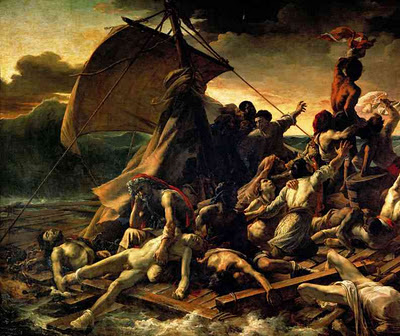-the ultimate goal of any composition is to feel resolved, unified and balanced, while at the same time being dynamic and engaging; this is achieved through unity & variety
-unity comes from the repetition of similar elements: line, shape, color, form, texture & subject matter can all unify a composition
-variety comes from the uniqueness or contrast of disparate elements
-the following images can all be discussed in terms of the unifying and varying elements that make them up:
...Kandinsky's image is unified through repetition of shape, and varied through contrast of color & scale
...the image below is unified through repetition and proximity (closeness) of form (the figure), and varied through contrast of gestures and figure/ground relationships
 |
| Thomas Anshutz |
...this calendar design utilizes similar shapes, font, symmetry & subject matter to unify all of its pages, while at the same time there is also variation between the subject matter (different animals), shapes and colors of each page
 |
| Loopz design on Etsy |
...Andy Warhol intentionally used the act of repetition in his work to point to the mass-production of pop culture and his pieces were always heavily unified, though you can still see variety within his color choices
 |
| Andy Warhol |
...Jacob Lawrence's paintings are dynamically varied through the use of different shapes and forms, but if you look more closely you begin to see patterns of color and forms emerging (particularly the rectangles and green areas in the middle of the canvas) that unify the picture plane
...this book cover uses the repetition of lines and geometric forms to unify the composition and tie the font to the rest of the image, while the variation of the color and scale of the forms adds interest
...these package designs and accessories are made up of different materials and no two utilize the same elements, but they use color and a similar geometric style of patterns and shapes to feel more cohesive
 |
| M Stetson design |
...finally, you can have images that look completely different but are tied together through a common theme or subject matter, like this holiday display; style-wise they are unrelated, but together they add up to a unified story
 |
| I Need Nice Things dot com |






















































